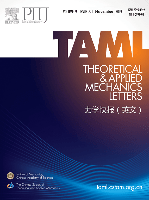
Theoretical and Applied Mechanics Letters
Scope & Guideline
Bridging Theoretical Insights with Practical Innovations
Introduction
Aims and Scopes
- Theoretical Mechanics:
This area encompasses the development and analysis of mathematical models that describe mechanical systems, including dynamics, statics, and continuum mechanics. - Computational Mechanics:
The journal emphasizes numerical methods and simulations, such as finite element analysis and computational fluid dynamics, to solve complex mechanical problems and predict system behaviors. - Experimental Mechanics:
Research involving experimental techniques to validate theoretical models or computational predictions is a core focus, showcasing advancements in instrumentation and measurement techniques. - Multiscale Mechanics:
The journal covers studies that bridge different scales of mechanical phenomena, from atomic to macroscopic levels, enhancing the understanding of material behavior under various conditions. - Data-Driven Approaches:
With the rise of machine learning and artificial intelligence, the journal has been incorporating studies that leverage data-driven methodologies for mechanics applications, such as predictive modeling and optimization. - Interdisciplinary Applications:
The journal promotes research that applies mechanical principles to other fields, including biomedical engineering, aerospace, civil engineering, and materials science.
Trending and Emerging
- Machine Learning and AI in Mechanics:
There is a significant increase in research applying machine learning techniques to solve complex mechanical problems, optimize designs, and enhance predictive capabilities. - Bio-inspired Mechanics:
Studies focusing on mechanical systems inspired by biological structures and functions are on the rise, showcasing innovative designs and applications in soft robotics and materials. - Advanced Materials and Composites:
Research on novel materials, including metamaterials and bio-composites, is trending, reflecting the need for innovative solutions in engineering applications. - Multiscale and Multifidelity Simulations:
There is a growing interest in multiscale modeling approaches that integrate various levels of detail and fidelity, allowing for more accurate predictions of mechanical behaviors across scales. - Sustainable Engineering Practices:
Emerging themes include the application of mechanics in sustainable engineering, focusing on energy efficiency, waste reduction, and environmentally friendly materials. - Complex Fluid Dynamics:
Research on complex fluid dynamics, including turbulent flows and interactions in multiphase systems, is gaining attention, driven by advancements in computational capabilities.
Declining or Waning
- Traditional Material Mechanics:
While foundational studies in material mechanics were once prevalent, there's a noticeable decline in papers focusing solely on classical material behavior without incorporating modern computational or data-driven techniques. - Purely Theoretical Models:
Research that presents purely theoretical models without empirical validation or computational support is becoming less common, as the field shifts towards more integrated approaches. - Static Analysis:
The emphasis on static analysis of mechanical systems has decreased, with more researchers focusing on dynamic behaviors and time-dependent phenomena instead. - Simplistic Fluid Dynamics Studies:
Basic studies in fluid dynamics that do not incorporate complex interactions or advanced simulation techniques are becoming less frequent, as the field trends towards more comprehensive and realistic modeling.
Similar Journals
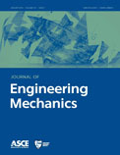
JOURNAL OF ENGINEERING MECHANICS
Innovative Insights for Engineering ExcellenceJOURNAL OF ENGINEERING MECHANICS, published by the ASCE - American Society of Civil Engineers, stands as a premier interdisciplinary journal in the field of engineering mechanics. With an impact factor reflecting its vital contributions—placing it in the Q1 category for both Mechanical Engineering and Mechanics of Materials—this journal has established itself as a critical resource for researchers and professionals alike. Since its inception in 1981 and continuing through 2024, it has provided a platform for the dissemination of high-quality research, emphasizing innovative methodologies and cutting-edge findings. The journal's ranking in Scopus further underscores its significance, with impressive standings in the 79th and 77th percentiles of its respective categories. As a vital resource for students and professionals aiming to stay abreast of developments in engineering mechanics, it remains committed to fostering rigorous scientific exploration and practical applications within the field.
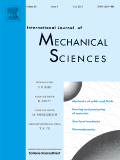
INTERNATIONAL JOURNAL OF MECHANICAL SCIENCES
Transforming Ideas into Engineering BreakthroughsThe INTERNATIONAL JOURNAL OF MECHANICAL SCIENCES, published by PERGAMON-ELSEVIER SCIENCE LTD, stands as a premier platform for groundbreaking research in the field of engineering and applied sciences. With an impressive convergence of scholarly work from 1960 to 2024, the journal maintains its position in the elite Q1 quartile across several categories, including Aerospace Engineering, Mechanics of Materials, and Ocean Engineering, among others. Its esteemed rank within the Scopus database further underscores its vital role in advancing knowledge in Mechanical Engineering and related disciplines, holding ranks in the top percentiles. While it operates on a subscription basis, the journal prioritizes delivering high-quality, peer-reviewed articles that not only inform but also inspire innovation within academia and industry alike. The INTERNATIONAL JOURNAL OF MECHANICAL SCIENCES is an essential resource for researchers, professionals, and students aiming to deepen their understanding and contribute to the dynamic landscape of mechanical sciences.

Journal of the Serbian Society for Computational Mechanics
Advancing Computational FrontiersJournal of the Serbian Society for Computational Mechanics, published by the Serbian Society for Computational Mechanics, is a vital platform for advancing research and knowledge in the field of computational mechanics. Established in 2012, this journal serves the academic community by providing a forum for innovative studies, methodologies, and applications within computational mechanics, presenting valuable insights for researchers, professionals, and students alike. With an ISSN of 1820-6530 and a ranking of Q4 in Computational Mechanics, it carries an essential influence in the engineering realm, despite its current rank of 71 out of 89. The journal's commitment to scholarly excellence aims to foster collaboration and encourage interdisciplinary research, making it an important resource for those invested in the evolving landscape of computational methodologies. Although the journal currently does not offer Open Access options, it remains dedicated to disseminating knowledge that will resonate within the local and global scientific community.

Journal of Theoretical and Applied Mechanics-Bulgaria
Advancing the Frontiers of MechanicsThe Journal of Theoretical and Applied Mechanics-Bulgaria, with the ISSN 0861-6663 and E-ISSN 1314-8710, is a pivotal publication in the field of mechanics, published by the esteemed BULGARIAN ACAD SCIENCES, INST MECHANICS. Based in Germany, this journal serves as a forum for researchers and practitioners to disseminate groundbreaking theories and applications in Computational Mechanics, Mechanical Engineering, and Modeling and Simulation. As of 2023, it is classified in the Q4 quartile for these categories, reflecting its emergence in the academic landscape, though it has room for growth in visibility and impact. The journal encompasses an ambitious scope aimed at fostering innovation and collaboration among academics, making it an invaluable resource for students and professionals seeking to stay abreast of emerging trends and methodologies in mechanics. Despite its current rank and percentile indicators in Scopus, the journal is committed to enhancing its reach and impact within the community through future editions converging from 2016 to 2024. With no open access options currently available, it emphasizes the importance of institutional subscriptions and academic partnerships to maintain its quality publication standards.

Izvestiya of Saratov University Mathematics Mechanics Informatics
Connecting Ideas: Where Mathematics Meets Mechanics and InformaticsIzvestiya of Saratov University Mathematics Mechanics Informatics is a prominent open access journal published by Saratov State University, focusing on the interdisciplinary fields of mathematics, mechanics, and computer science. Established as an accessible platform for researchers since 2007, this journal fosters the dissemination of innovative research and advancements in computational mechanics, general mathematics, and mechanical engineering among others. Although currently categorized within the Q4 quartile rankings in various domains, including Computational Mechanics and Mechanics of Materials, it serves as a crucial resource for professionals and scholars aiming to explore emerging trends and methodologies. Operating out of Saratov, Russian Federation, this journal not only contributes to local academic discourse but also holds international relevance, welcoming submissions that push the boundaries of traditional research. Researchers, professionals, and students alike are encouraged to engage with the wealth of knowledge presented within its pages, reinforcing the journal’s role as a vital component in the ongoing development of these scientific fields.
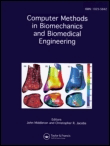
COMPUTER METHODS IN BIOMECHANICS AND BIOMEDICAL ENGINEERING
Transforming Research with Cutting-Edge Computational MethodsCOMPUTER METHODS IN BIOMECHANICS AND BIOMEDICAL ENGINEERING, published by TAYLOR & FRANCIS LTD, is a leading journal dedicated to the interdisciplinary field of biomechanics and biomedical engineering. With an ISSN of 1025-5842 and an E-ISSN of 1476-8259, this journal has been a significant resource since its inception in 1997 and will continue to publish cutting-edge research until 2024. The journal holds a respectable position in the academic community, categorized in Q3 of multiple domains including Bioengineering, Biomedical Engineering, and Human-Computer Interaction, reflecting its relevance across diverse fields. Although the journal does not offer open access, it provides valuable insights and methodologies essential for researchers, professionals, and students engaged in advancing computational techniques and their application in medicine and engineering. With Scopus rankings highlighting its growing influence, particularly in the Biomedical Engineering and Human-Computer Interaction sectors, this journal plays a crucial role in fostering innovation and enhancing the understanding of biomechanical systems through computational methods.

COMPUTATIONAL MECHANICS
Elevating Research Standards in Computational MechanicsCOMPUTATIONAL MECHANICS, published by SPRINGER, is a premier international journal that focuses on the intersection of applied mathematics, engineering, and computational methods. With a commendable Q1 ranking in multiple categories, including Applied Mathematics and Mechanical Engineering, this journal is pivotal for disseminating groundbreaking research and innovative methodologies that advance the field. The journal has steadily contributed to the academic community since its inception in 1986 and continues to lead discussions and practices in computational mechanics and related disciplines. With a robust impact reflected in its Scopus rankings—placing it within the top percentiles across various categories—COMPUTATIONAL MECHANICS serves as a crucial platform for researchers, professionals, and students seeking to explore and contribute to significant advancements in computational theory and mathematical applications. Although it does not currently operate under an open access model, the journal ensures wide accessibility through libraries and institutional subscriptions, fostering a rich exchange of knowledge in the global scientific community.

ACTA MECHANICA SINICA
Unveiling Breakthroughs in Mechanical Engineering ResearchACTA MECHANICA SINICA is a prestigious journal published by SPRINGER HEIDELBERG that has been a cornerstone in the field of mechanical engineering and computational mechanics since its inception in 1985. Based in Germany, this leading publication is internationally recognized for its high impact, holding a Q1 ranking in both Computational Mechanics and Mechanical Engineering as of 2023. It is positioned prominently within the academic community, evidenced by its respectable Scopus rankings—#21 in Computational Mechanics and #159 in Mechanical Engineering, both within the 76th percentile. Researchers and professionals alike turn to ACTA MECHANICA SINICA for cutting-edge research, innovative methodologies, and insights that drive advancements in the discipline. Although the journal is not open access, its rigorous peer-review process ensures the publication of high-quality, impactful research that is essential for scholars and practitioners aiming to stay at the forefront of mechanical engineering advancements.
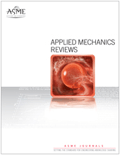
Applied Mechanics Reviews
Pioneering Insights for the Engineering Community.Applied Mechanics Reviews, a prestigious journal published by ASME (American Society of Mechanical Engineers), is an essential resource in the field of mechanical engineering. With an impact factor reflecting its high relevance and rigorous peer-review process, this journal holds a commendable Q1 ranking in the 2023 category quartiles and is positioned at an impressive rank of #7 out of 672 in Scopus rankings, placing it in the 99th percentile. The journal, with an ISSN of 0003-6900 and E-ISSN of 2379-0407, serves as a vital platform for the dissemination of groundbreaking research, offering a comprehensive overview of applied mechanics, spanning theoretical developments to practical applications. Although it does not provide open access options, the insights published within these pages are invaluable for researchers, professionals, and students eager to enhance their knowledge and stay abreast of the latest advancements. With volumes dating back to 1965 and continuing through 2024, Applied Mechanics Reviews remains a cornerstone of the mechanical engineering community, fostering innovation and collaboration across various domains of engineering.
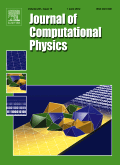
JOURNAL OF COMPUTATIONAL PHYSICS
Charting the Course for Future Discoveries in PhysicsJOURNAL OF COMPUTATIONAL PHYSICS, an esteemed publication from ACADEMIC PRESS INC ELSEVIER SCIENCE, serves as a premier platform in the field of computational physics and its interdisciplinary applications. Since its inception in 1966, the journal has provided invaluable insights and significant advancements in areas such as applied mathematics, numerical analysis, and modeling and simulation. With a robust impact factor and ranking in the top quartile across various related categories, including Q1 in Applied Mathematics and Physics and Astronomy, it is essential reading for researchers and professionals aiming to stay at the forefront of computational techniques and methodologies. Although the journal is not open access, it remains highly regarded with a reputation for rigorous peer review and high-quality publications. As the field continues to evolve, the JOURNAL OF COMPUTATIONAL PHYSICS highlights innovative research that not only advances theoretical constructs but also offers practical applications in scientific and engineering domains. For scholars and students, this journal embodies a critical resource for deepening their understanding and fostering dialogue within the scientific community.